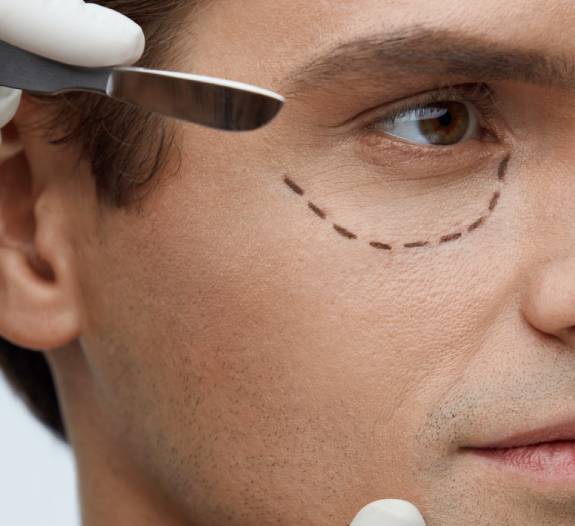
Procedure
Blepharoplasty is performed on an outpatient basis, meaning the patient is allowed to go home shortly after the procedure. It usually takes around two hours if both upper and lower eyelids correction is done together. Most likely local anesthesia / numbing injection around the eye with or without oral sedation is employed. General anesthesia is used only in certain situations.
Through incisions made along the natural lines over the eyelids, the skin is separated from the underlying tissue and excess fat, skin, and muscle if indicated are removed. The incisions are then closed with very small stitches. The sutures of the upper lids stay for three to six days. The lower eyelid incision may either be on the inside of the eyelid or the outside underneath the lower eyelashes.
Recovery time is relatively short. Immediately post-procedure patient is shifted to a recovery room and monitored. In the absence of any untoward complication, the patient is sent home the same day.
It is important to rest for a few days following the procedure. A little swelling and pain after the surgery are not uncommon and it resolves in a week or two.
Blepharoplasty enhances the appearance and helps in building confidence. However, it may not result in the expected ideal look or alter the facial structure. It is important to discuss the requirements and expectations with the surgeon before deciding on the procedure.
 Whatsapp
Whatsapp Facebook
Facebook Twitter
Twitter Instagram
Instagram Linkedin
Linkedin Pinterest
Pinterest